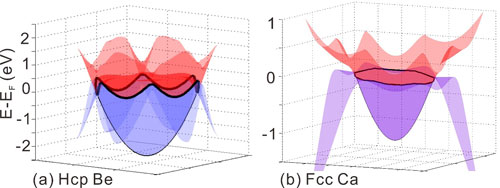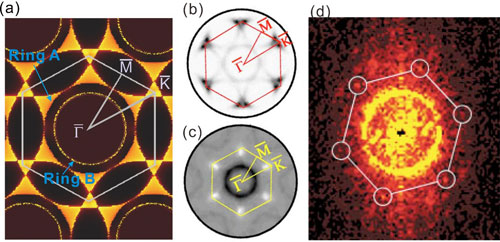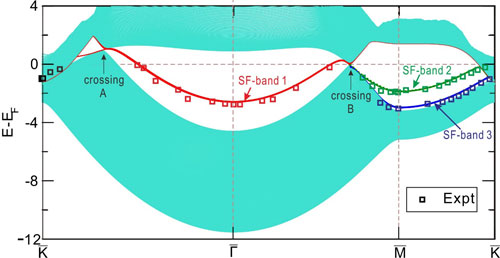A degenerate doublet with Fermi number ±1/2 was first predicted to exist in soliton by solving the Dirac equation as early as 1976. In 2011, the Dirac node line (DNL), defined as a closed loop consisting of continuous Dirac cones, was proposed to be correlated with such a degenerate doublet in condensed matters. Although this DNL feature was recently reported to occur in several compound systems, none of them has been experimentally realized.
Prof. CHEN Xingqiu and colleagues from Shenyang National Laboratory for Materials Science (SYNL), the Institute of Metal Research, Chinese Academy of Sciences (IMR, CAS), have now made an advance towards identifying the existence of DNL in experiment for pure beryllium metal through comparing results from first-principles calculations and those from previous photoemission spectroscopy studies of pure beryllium.
This work reveals that beryllium harbors the DNL induced by the s-->pz band inversion at the centre of the Brillouin zone, and the topology of the DNL results in the appearance of novel non-trivial surface states, a half-filled closed ring, as shown in the Be (0001) surface. In turn, the DNL and its induced topological surface states help to rationalize many of the histrionic debates on various intriguing surface electronic behaviors of Be metals, such as a severe deviation from a nearly free-electron gas, the giant electron density (or Friedel) oscillations, and Landau quantum oscillations. Beryllium also exhibits a giant surface electron-phonon coupling effect, which is also likely to be correlated with its DNL property.
Chen and colleagues further revealed that each of the elemental alkali earth metals of Mg, Ca, and Sr also harbors the DNL, and speculated that the fascinating topological property of DNL might naturally exist in other elemental metals as well. In particular, because of extremely weak spin-orbit coupling effects in these alkali earth metals, the Dirac node lines will be highly robust against the decomposition into Dirac or Weyl fermions. Therefore, they provide a wonderful platform to investigate the related features of Dirac node lines.
The related work is published in the latest issue of the Physical Review Letters, 117, 096401 (2016).
Fulltexts: http://journals.aps.org/prl/abstract/10.1103/PhysRevLett.117.096401

Figure 1: Dirac node lines in hcp Be (a) and fcc Ca (b). (Image by IMR)

Figure 2: Fermi surface of the Be (0001) surface. (a) DFT-derived Fermi surface highlighting a surface state of a fully closed circle around the centered Γ point in the Brillouin zone; (b) and (c) The ARPES experimentally measured Fermi surfaces (see Phys. Rev. B, 72, 165414 (2005)); (d) The STM experimentally observed anomalously large Friedel oscillations on the Be (0001) surface (see Science,275,1765,(1997)). (Image by IMR)

Figure 3: The nontrivial topological surface electronic band structures of the Be (0001) surface in comparison with ARPES experimental measurements. (Image by IMR)
Contact:
Prof. CHEN Xingqiu
Email: xingqiu.chen@imr.ac.cn
Institute of Metal Research, Chinese Academy of Sciences, 72 Wenhua Road, Shenyang, Liaoning, 110016, China